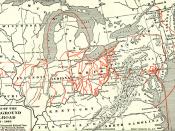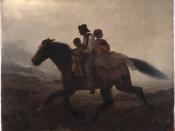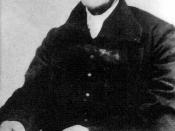Underground Railroad in U.S. history, is a loosely organized system for helping fugitive slaves escape to Canada or to areas of safety in free states. It was run by local groups of Northern abolitionists , both white and free blacks. The metaphor first appeared in print in the early 1840s, and other railroad terminology was soon added. The escaping slaves were called passengers; the homes where they were sheltered, stations; and those who guided them, conductors. This nomenclature, along with the numerous, somewhat glorified, personal reminiscences written by conductors in the postwar period, created the impression that the Underground Railroad was a highly systematized, national, secret organization that accomplished prodigious feats in stealing slaves away from the South. In fact, most of the help given to fugitive slaves on their varied routes north was spontaneously offered and came not only from abolitionists or self-styled members of the Underground Railroad, but from anyone moved to sympathy by the plight of the runaway slave before his eyes.
The major part played by free blacks, of both North and South, and by slaves on plantations along the way in helping fugitives escape to freedom was underestimated in nearly all early accounts of the railroad. Moreover, the resourcefulness and daring of the fleeing slaves themselves, who were usually helped only after the most dangerous part of their journey (i.e., the Southern part) was over, were probably more important factors in the success of their escape than many conductors readily admitted. In some localities, like Philadelphia, Cincinnati, Wilmington, Del., and Newport, Ind. (site of the activities of Levi Coffin ), energetic organizers did manage to loosely systematize the work; Quakers were particularly prominent as conductors, and among the free blacks the exploits of Harriet Tubman stand out. In all cases, however, it is extremely difficult...


